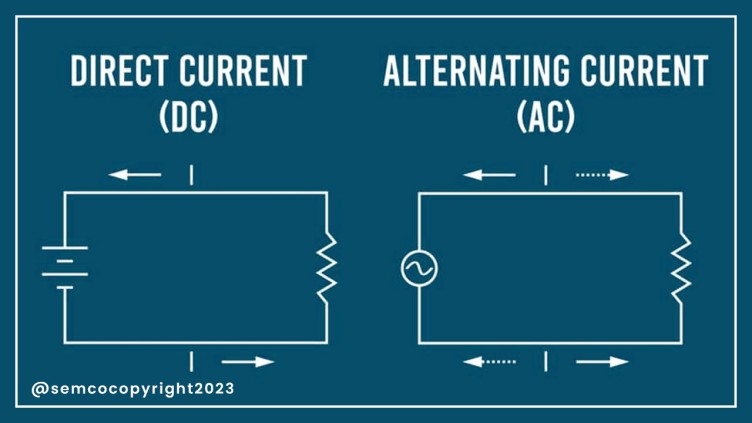The AC and DC Understanding in Power Supply
AC & DC Power Supply are the two most common types of electrical power used in homes and businesses today. AC power is produced by an alternating current generator, while DC power is produced by a direct current generator. Each type of power has its own advantages and disadvantages, and understanding the differences between the two is essential to making the right choice for your power supply needs.
AC Power
AC power is generated by alternating current generators, which produce alternating current by spinning a coil of wire in the presence of a magnetic field. This current alternates in both direction and voltage over a set frequency (typically 60 Hz in the United States). The voltage of AC power can easily be changed using a transformer, which allows it to be used for a variety of applications.
The primary advantage of AC power is its versatility. It can easily be changed to different voltages, which makes it useful for powering a variety of devices. AC power is also relatively cheap to generate and distribute, which makes it the power source of choice in many parts of the world.
The primary disadvantage of AC power is that it is prone to losses due to power loss over long distances. This can be mitigated by using higher voltages, but this can also lead to safety issues. In addition, AC power is more susceptible to power fluctuations, which can damage sensitive electronics.

DC Power
DC power is generated by direct current generators, which produce direct current by passing a constant current through a coil of wire. The voltage of DC power is fixed and cannot be changed without the use of a converter.
The primary advantage of DC power is its stability. Unlike AC power, DC power does not fluctuate in voltage, which makes it ideal for powering sensitive electronics. DC power is also more efficient than AC power, as it does not suffer from power loss over long distances.
The primary disadvantage of DC power is its lack of versatility. It cannot be changed to different voltages without the use of a converter, which can add to the cost of using DC power. In addition, DC power can be dangerous to work with, as it can produce high levels of current.
Basic Principles of Inverter
An inverter is an electrical device that converts direct current (DC) to alternating current (AC). Inverters are commonly used to power AC devices from a DC power source, such as a battery or solar panel. Inverters come in a variety of sizes, from very small ones used to power a few lights or a small appliance, to very large ones used to power entire homes.
The basic principle of an inverter is simple: an AC waveform is generated by switching a DC source on and off at a very high frequency. This creates a square waveform, which is then filtered to create a smooth and consistent AC waveform of the desired frequency and voltage.
Inverters have several advantages over traditional AC power sources. They are more efficient, as they do not suffer from the power losses associated with long-distance AC power transmission. In addition, they provide a clean and consistent AC waveform, making them ideal for powering sensitive electronics.
Advantages and Disadvantages of AC & DC Power Supply
AC and DC power each have their own advantages and disadvantages. AC power is more versatile and cheaper to generate, while DC power is more efficient and stable. Understanding the differences between the two is essential to making the right choice for your power supply needs.
The primary advantage of AC power is its versatility. It can easily be changed to different voltages, which makes it useful for powering a variety of devices. AC power is also relatively cheap to generate and distribute, which makes it the power source of choice in many parts of the world.
The primary disadvantage of AC power is that it is prone to losses due to power loss over long distances. This can be mitigated by using higher voltages, but this can also lead to safety issues. In addition, AC power is more susceptible to power fluctuations, which can damage sensitive electronics.
The primary advantage of DC power is its stability. Unlike AC power, DC power does not fluctuate in voltage, which makes it ideal for powering sensitive electronics. DC power is also more efficient than AC power, as it does not suffer from power loss over long distances.
The primary disadvantage of DC power is its lack of versatility. It cannot be changed to different voltages without the use of a converter, which can add to the cost of using DC power. In addition, DC power can be dangerous to work with, as it can produce high levels of current.
In conclusion, both AC and DC power have their own advantages and disadvantages. Understanding the differences between the two will help you make the right choice for your power supply needs.
About Semco – Semco University is an educational website that is catering to the needs of students and researchers. Offering information on Lithium-ion batteries. The resources and content are compiled from various sources including manufacturers, test labs, crowdsourcing, etc. Our motto is to provide a viable resource for companies, students, and enthusiasts interested in participating in the Li-ion Battery industry. Our initiative is to make people aware of the benefits, and opportunities of the revolutionary Lithium Batteries for multiple applications
For More Updates Follow Us

